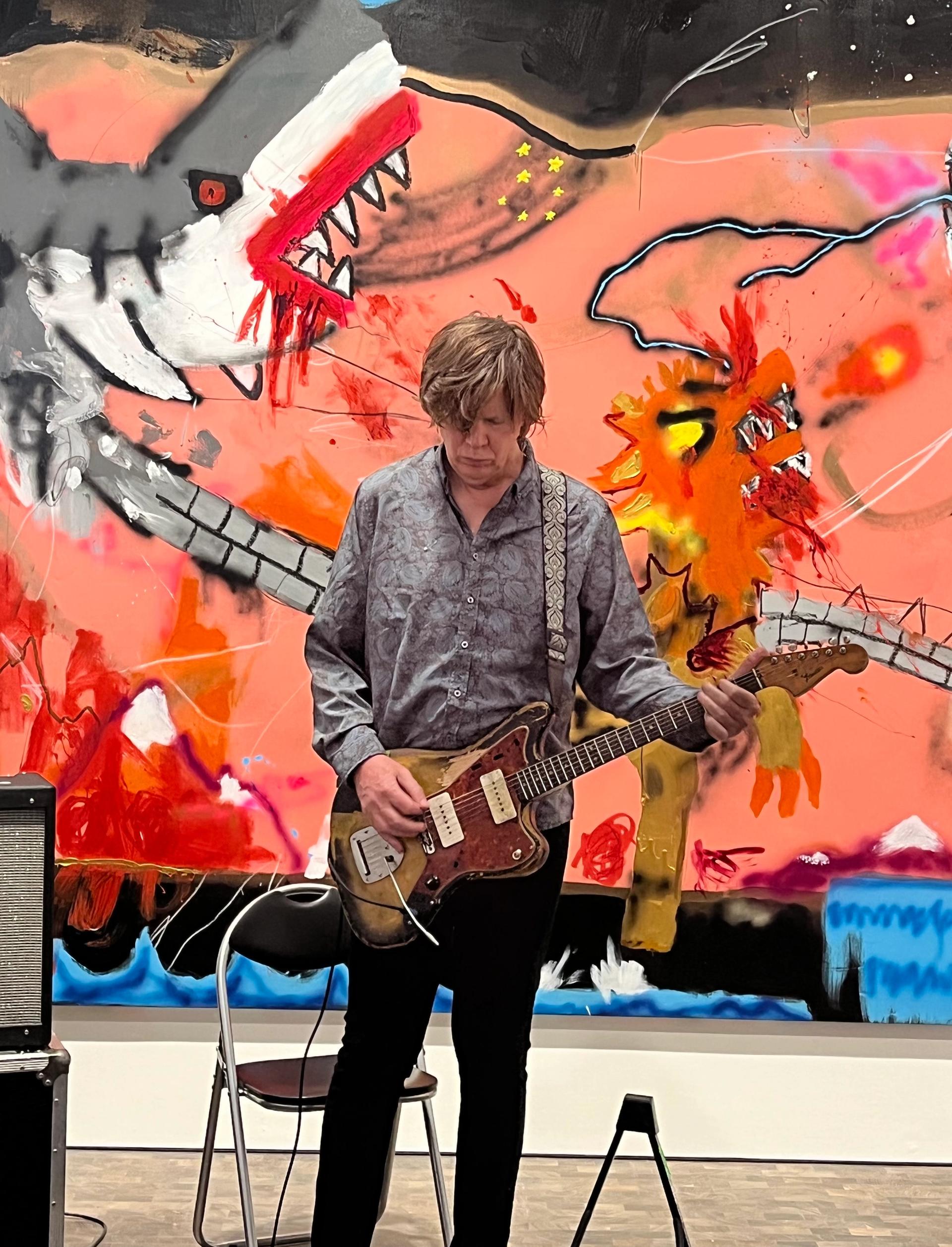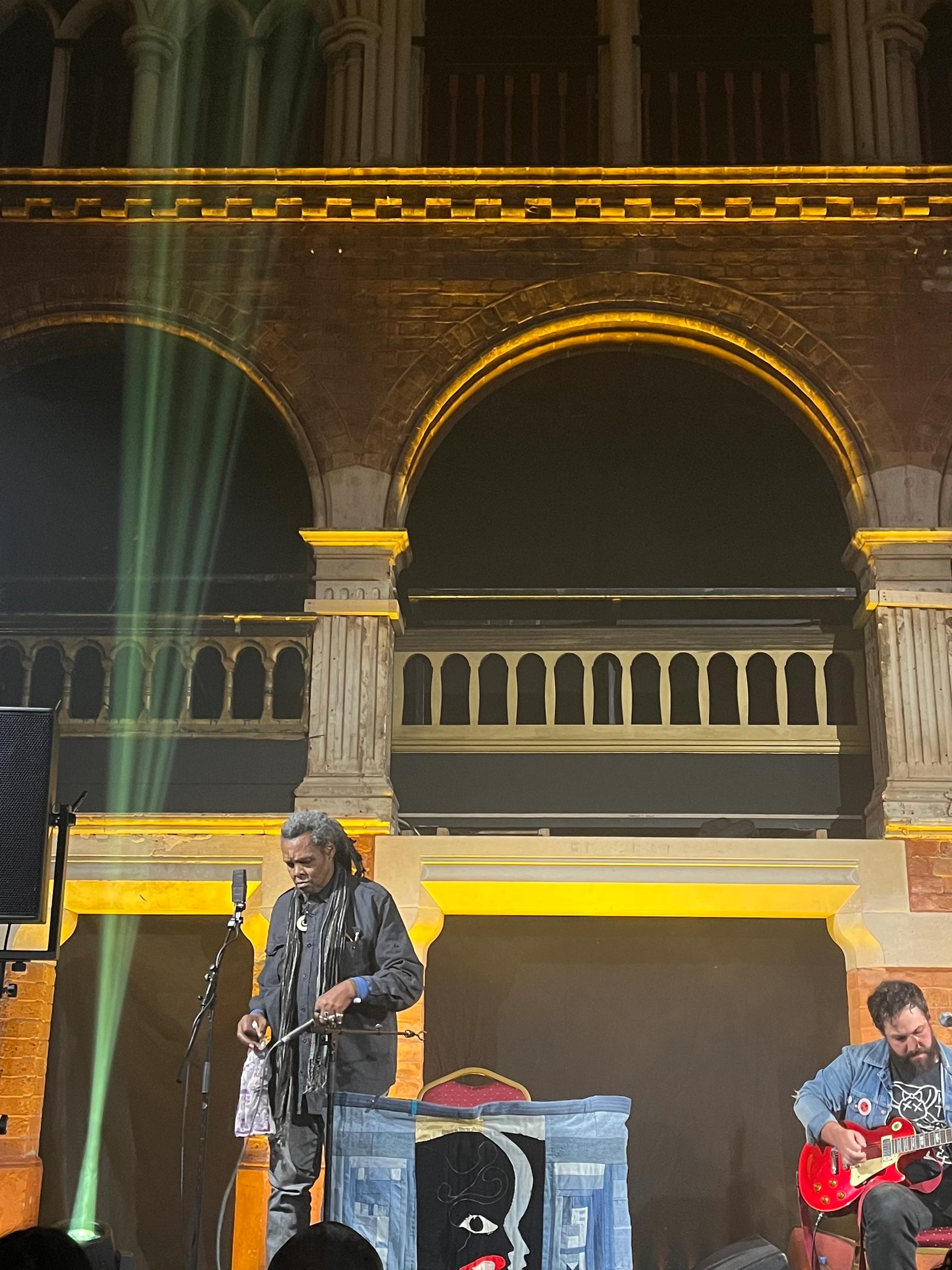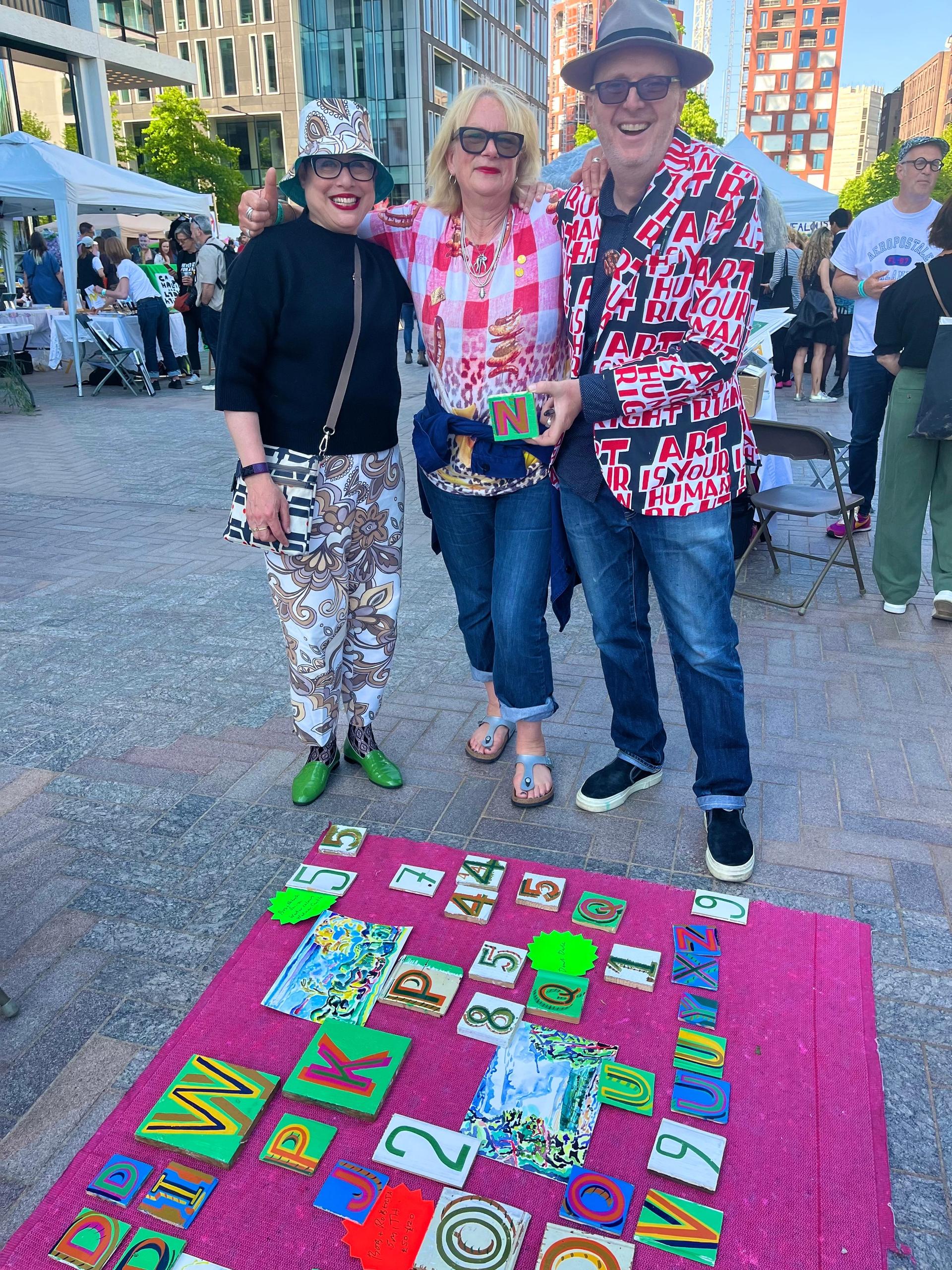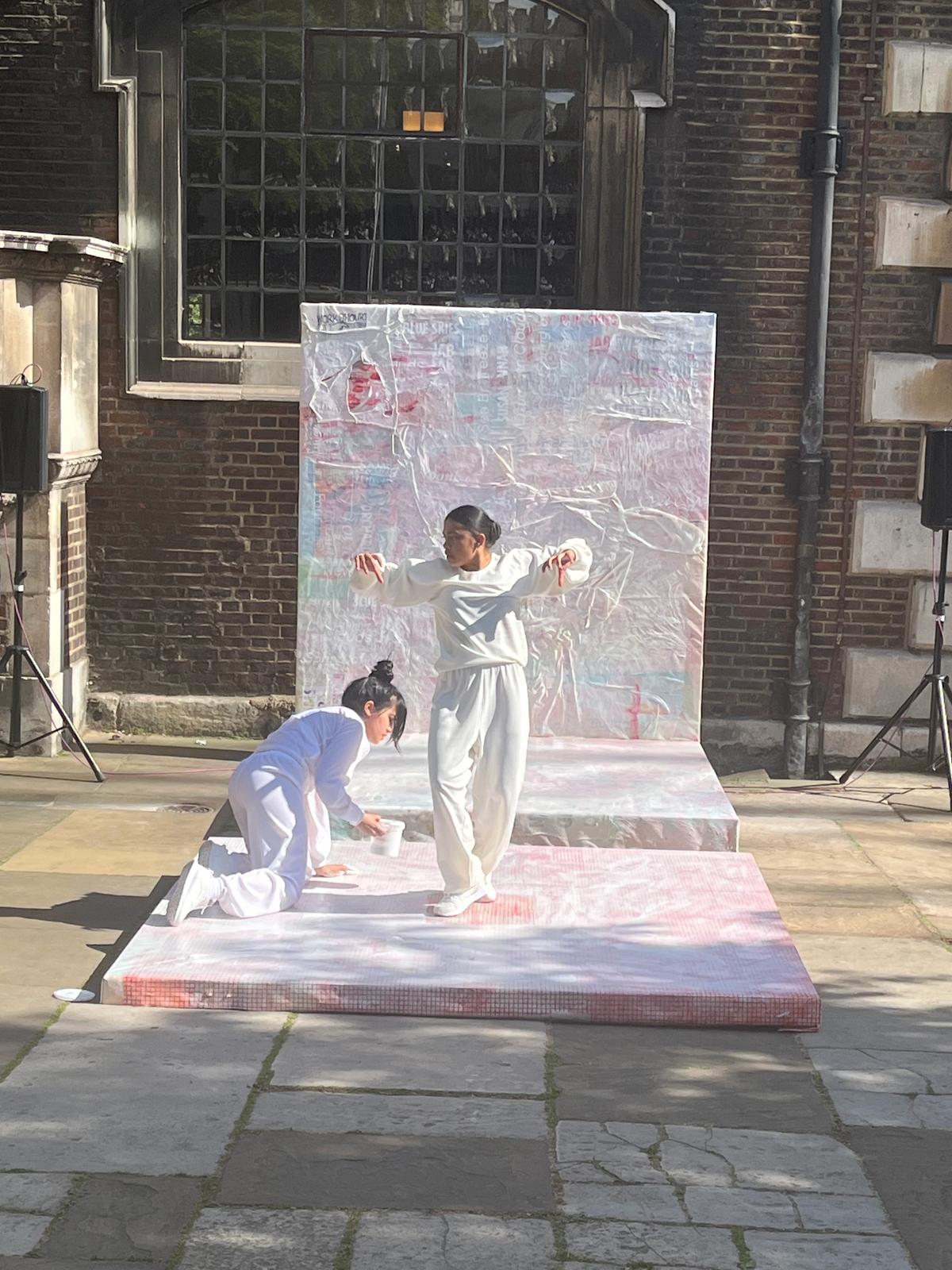Unless possessed of the ability to teleport, it was impossible to experience even half of the unprecedented art activity taking place in the capital last weekend. For its second edition, London Gallery Weekend (LGW) upped its game with more than 150 commercial galleries staying open after hours from Friday to Sunday across Central, South and East London. There was also an important new partnership with the Art Fund, resulting in curators from 18 institutions from Aberdeen to Penzance attending the weekend and forging new relationships with regional galleries and the commercial sector.
This year LGW also launched a slew of specially commissioned live events and performances taking place over three days across town. These kicked off on Friday afternoon with Mandy El Sayegh’s live work The Minimum in the square outside St James’s church in Piccadilly. Here, in a piece involving sound, paint and movement, the artist and three dancers collaborated with choreographer Alethia Antonia to draw on hip-hop and freestyle moves in order to explore bodies in regulated spaces.The performance centred round a El Sayegh’s painted installation which was roughly the size of a solitary confinement cell, with El Sayegh applying paint live during the performance accompanied by an atmospheric soundscape melding snippets of news, comment and interviews which had been composed by Lily Oakes. On Saturday afternoon The Minimum took place outside Peckham Library and on Sunday in Allen Gardens in Shoreditch.

Thurston Moore performing among Robert Nava's paintings at Pace Gallery. Courtesy of Louisa Buck
Back inside the gallery on Friday at David Zwirner, Rose Wylie was busy signing copies of a special publication of The Tempest, in which Shakespeare’s great fantasy play is brilliantly and anarchically accompanied by, rather than illustrated with, her drawings: Ariel as a flying matchbox, anyone? Other events included self-taught Japanese artist Ayako Rokkaku creating her exuberant paintings live in Koenig Gallery and American musician Thurston Moore, formerly best known for his time as a member of Sonic Youth, playing ear-popping electronic music before the zippy fantastical paintings of Chicago-born Robert Nava. But only the first word of the show’s title Thunderbolt Disco was reflected in Moore’s aural accompaniment.
However the weekend’s highpoint—for your correspondent at least—was The Edge of What, a truly memorable performance by the veteran American artist and musician Lonnie Holley, who is currently showing his paintings and a sculpture made from found objects and salvaged materials at Edel Assanti Gallery. Many of these materials were gathered earlier this year while Holley was on a residency in Suffolk where he produced a commission for Artangel, performing and filming in the shingle wilderness of Orfordness. The film was screened before Holley’s electrifying Artangel-hosted gig, which took place in Stone Nest, a disused 19th-century Presbyterian Church on Shaftesbury Avenue that was formerly Limelight nightclub.
Here, for over an hour Holley sang, declaimed and whistled at a pulpit-like keyboard covered with an appliqued Gee's Bend Quilt, not so much accompanied as complemented by his student and longtime collaborator Lee Bains. The lofty vaulted church offered the perfect setting for Holley’s heartfelt, incantatory and largely improvised songs, covering themes spanning politics, ecology, technology, war and conflict and a sense of place and belonging—all infused with his harsh and tumultuous experience of growing up as the seventh of 27 children in the pre-Civil Rights era American South.

Lonnie Holley performing at Stone Nest. Courtesy of Louisa Buck
Among the rapt audience at Holley’s gig on Saturday night was Pulp frontman Jarvis Cocker, who has currently taken over The Gallery of Everything with Good Pop Bad Pop, a highly personal five-room installation of the musician's archive and memorabilia—even extending to a recreation of his teenage bedroom. The show is an extension of Cocker’s new book, also called Good Pop Bad Pop, which charts his cultural and musical development via a collection of objects unearthed from his old loft, many of which now are now on show in this fascinating immersive exhibition.
As well as the plethora of galleries plying their wares, last weekend also saw the opening of a clutch of art fairs. Photo London, the capital’s annual fair devoted to lens-based work was back with 75 galleries in the grand setting of Somerset House.
This coincided with The Eye of The Collector, a refreshingly non-booth affair with works from 15 galleries ranging from antiquities to the contemporary. These were displayed throughout the opulent Victorian-baronial interior of 2 Temple Place, a magnificent neo-Gothic mansion commissioned by the multimillionaire Henry Astor in the late-19th century and designed by the leading architect, John Loughborough Pearson.

(Left to right): Jessica Voorsanger, Louisa Buck, and Bob and Roberta Smith at the Art Car Boot Fair. Courtesy of Louisa Buck
Rather more gritty was the in-real-life return of the al fresco Art Car Boot Fair, which parked up in the heart of King’s Cross under the sweltering Saturday sun. Loosely themed around matters electric, it brought together an eclectic and sometimes anarchic gathering of contributors ranging from Paul Sakoilsky’s Hermann Nitsch-inspired Kunst Clown performances to the vividly feminist paintings and ceramics from Neo Naturists Jennifer and Christine Binnie. Mat Collishaw was selling a stunning turquoise and gold butterfly print with all funds going to the Ukraine and Polly Morgan was offering a new series of taxidermied snake sculptures for a greatly reduced price.
Then for those art book and magazine lovers, Offprint London returned to Tate Modern’s Turbine Hall for its sixth edition, hosting independent experimental, and socially-engaged publishers across the arts, architecture, design, humanities, and visual culture. So overall, it can safely be said that in London at least, the art world is now fully back in business.


